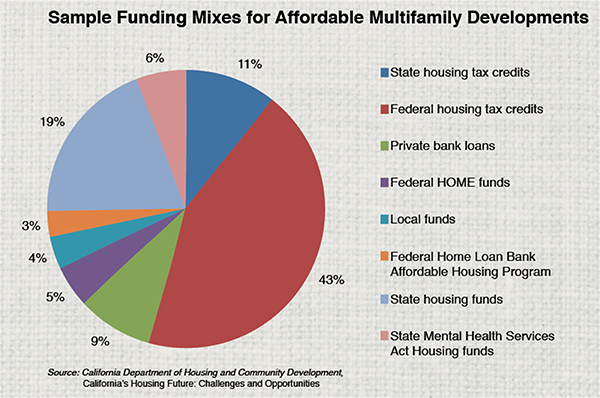Can We Make Housing More Affordable Without Lowering Home Prices? The Gregor Robertson Approach

Table of Contents
Increasing Housing Supply: The Foundation of Robertson's Approach
Addressing the housing crisis fundamentally requires increasing the housing supply. This was a cornerstone of Gregor Robertson's approach to improving housing affordability in Vancouver. Simply put, more housing means less competition and, ideally, lower prices. His strategy focused on several key areas:
-
Relaxing zoning regulations: Vancouver's zoning regulations were historically restrictive, limiting density and height. Robertson's administration worked to loosen these restrictions, allowing for the construction of taller buildings and more housing units per acre. This increased the overall housing supply and, consequently, helped to alleviate some pressure on the housing market. This targeted both rental housing and opportunities for homeownership.
-
Streamlining development approvals: Bureaucratic hurdles and lengthy approval processes significantly delay new construction. Robertson's team focused on reducing this red tape, speeding up the process for obtaining building permits and other necessary approvals. This encouraged developers to build more housing, accelerating the increase in supply. Faster approvals also translate to lower development costs, impacting overall affordability.
-
Investing in infrastructure: Increased density requires robust infrastructure to support it. Investments in public transportation, utilities (water, sewer, electricity), and other essential infrastructure were critical to enabling development in underserved areas. Improved infrastructure made these areas more attractive for development, further boosting housing supply and potentially reducing reliance on car ownership.
-
Incentivizing developers: Financial incentives played a role in encouraging developers to build affordable housing units. Tax breaks and other incentives were offered to developers who included a certain percentage of affordable units in their projects. This helped to ensure that some of the new housing stock was specifically targeted at lower and middle-income households.
-
Exploring innovative building techniques: Robertson's administration also explored and promoted innovative building techniques like modular construction. Modular construction can significantly reduce building time and costs, making housing more affordable to both build and purchase. This contributed to a faster increase in the overall housing stock.
Targeting Rental Housing and Rent Control
A significant portion of Vancouver's population relies on rental housing. Therefore, Robertson's policies addressed the rental market directly:
-
Implementing stricter rent control measures: Rent control protects tenants from excessive rent increases, ensuring that their housing costs remain stable and predictable. These measures helped to prevent renters from being priced out of the market. However, the impact and effectiveness of rent control are complex and debated, with arguments of hindering investment and supply.
-
Increasing the supply of purpose-built rental housing: Through incentives and zoning changes, the administration actively promoted the construction of new purpose-built rental buildings. This directly addressed the shortage of rental units and provided more options for renters.
-
Strengthening tenant protection laws: Protecting tenants from unfair evictions is crucial for maintaining housing stability. Robertson’s policies aimed to strengthen tenant protection laws, providing security and reducing the risk of displacement.
-
Investing in social housing programs: Social housing programs provide affordable rental options for low-income households. Investments in this area helped to ensure that vulnerable populations had access to safe and affordable housing.
-
Addressing vacancy control: Strategies were explored to address vacancy control, discouraging landlords from leaving units empty to drive up prices. This ensured that existing rental units remained available to the market.
Addressing Homeownership Challenges Beyond Price Reduction
Homeownership remains a significant aspiration for many, but it’s becoming increasingly unattainable. Robertson's approach included initiatives to make homeownership more accessible:
-
Creating down payment assistance programs: These programs helped first-time homebuyers overcome the significant financial hurdle of saving for a down payment. Reducing the upfront cost made homeownership more achievable for those who might otherwise be excluded.
-
Implementing shared equity programs: Shared equity programs allowed buyers to purchase a larger share of a home's equity over time, reducing their initial financial burden. This helped to make homeownership more accessible for a wider range of incomes.
-
Expanding access to low-interest mortgages: Making low-interest mortgages more widely available made home financing more affordable and accessible. This reduced the monthly cost of owning a home, improving affordability.
-
Targeting specific demographics: Initiatives were specifically targeted towards demographics facing significant affordability challenges, such as young families and single parents. This addressed specific needs and barriers within the population.
-
Exploring land trusts and community land trusts: These organizations help maintain affordable homeownership options in the long term by ensuring that land remains affordable for future generations.
Evaluating the Success and Limitations of the Robertson Approach
Assessing the complete success of Robertson's approach requires a nuanced understanding of its impact on various housing affordability metrics.
-
Analyzing the impact on housing affordability: Metrics such as vacancy rates, rent increases, and homeownership rates provide insights into the effectiveness of the policies. Data analysis is essential to objectively evaluate whether the strategies achieved their intended goals.
-
Identifying implementation challenges: Any policy implementation comes with challenges. Identifying these hurdles – such as bureaucratic resistance, funding limitations, or unexpected market dynamics – is vital to improving future strategies.
-
Comparing to other cities: Benchmarking against similar initiatives in other cities provides valuable context and allows for a broader understanding of best practices and potential pitfalls.
-
Assessing long-term sustainability: The long-term effects of the policies require ongoing monitoring. Sustainability is key to ensuring that any positive impact is not short-lived.
-
Potential for replication: The feasibility and adaptability of the Vancouver model in other urban contexts must be assessed, considering the specific socio-economic characteristics and market dynamics of each area.
Conclusion
Addressing the housing affordability crisis requires multifaceted strategies. While simply lowering home prices might seem appealing, it’s not always practical or effective. Gregor Robertson's approach in Vancouver offers a valuable case study demonstrating how a city can tackle affordability by focusing on increasing housing supply, improving rental protection, and supporting homeownership through innovative programs. By focusing on increasing supply and supporting renters and first-time buyers, cities can make significant strides in improving housing affordability without solely relying on price reductions. Further research and adaptation of these models are crucial for creating truly affordable housing options for all. To learn more about effective strategies for achieving affordable housing, explore the impact of initiatives similar to the Gregor Robertson approach in your community.

Featured Posts
-
 Bollywood News Honey Singhs Payal Reaches 200 Million Views Dedicated To Nora Fatehi
May 27, 2025
Bollywood News Honey Singhs Payal Reaches 200 Million Views Dedicated To Nora Fatehi
May 27, 2025 -
 Fire Country Season 3 Episode 15 One Last Time Preview
May 27, 2025
Fire Country Season 3 Episode 15 One Last Time Preview
May 27, 2025 -
 Is Kai Cenat Addressing The Controversy Silence Following Racist Remarks
May 27, 2025
Is Kai Cenat Addressing The Controversy Silence Following Racist Remarks
May 27, 2025 -
 Mobland Episode 9 Free Streaming Tom Hardy Pierce Brosnan
May 27, 2025
Mobland Episode 9 Free Streaming Tom Hardy Pierce Brosnan
May 27, 2025 -
 Nderhyrja E Gjermanise Ne Luften E Ukraines Furnizimi I Armeve Te Avancuara
May 27, 2025
Nderhyrja E Gjermanise Ne Luften E Ukraines Furnizimi I Armeve Te Avancuara
May 27, 2025
Latest Posts
-
 Agassis Pickleball Debut What We Learned
May 30, 2025
Agassis Pickleball Debut What We Learned
May 30, 2025 -
 El Impacto De Una Frase El Ex Numero 3 Del Mundo Y Su Consejo A Marcelo Rios
May 30, 2025
El Impacto De Una Frase El Ex Numero 3 Del Mundo Y Su Consejo A Marcelo Rios
May 30, 2025 -
 Reviewing Andre Agassis Entry Into Professional Pickleball
May 30, 2025
Reviewing Andre Agassis Entry Into Professional Pickleball
May 30, 2025 -
 La Motivacion Detras De La Frase El Legado Del Ex Numero 3 Del Mundo A Marcelo Rios
May 30, 2025
La Motivacion Detras De La Frase El Legado Del Ex Numero 3 Del Mundo A Marcelo Rios
May 30, 2025 -
 Instagram Die Stars Denen Steffi Graf Folgt
May 30, 2025
Instagram Die Stars Denen Steffi Graf Folgt
May 30, 2025
